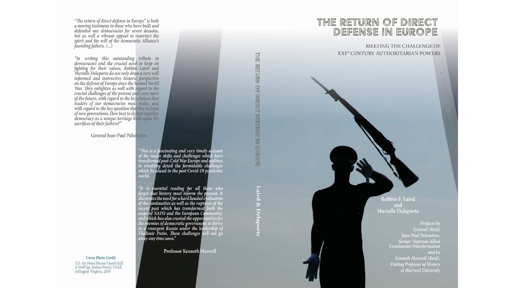This is an ope-ed by Robbin Laird, a military and security analyst.
[…]
Europe finds itself confronting an unprecedented dual challenge to its critical infrastructure: immediate military threats from Russia requiring urgent port and transportation upgrades, while simultaneously grappling with long-term strategic vulnerabilities created by decades of Chinese and Russian investment in European infrastructure.
[…]
The urgency of Europe’s infrastructure challenge became starkly apparent in recent NATO planning discussions. At the upcoming NATO summit, alliance members are targeting a dramatic increase in military spending from 2% to 5% of GDP, with 1.5% specifically allocated to what officials term “nonlethal domains” – cybersecurity, infrastructure, roads, railroads, and critically, ports.
[…]
European officials and NATO planners have identified 500 critical locations across the continent requiring immediate upgrades to ensure rapid troop movement to eastern borders. The challenge extends beyond mere logistics – it encompasses the fundamental question of whether Europe’s commercial infrastructure can serve dual civilian and military purposes without compromising either function.
[…]
The infrastructure crisis reveals what defense analysts call the convergence of cyber and physical vulnerabilities. As one expert noted, “Critical infrastructure is an area where the cyber and physical worlds are converging – the operation of digital systems affects our physical world, and so a cyber incident can have direct and serious physical impacts on property and people.”
[…]
While Europe races to address immediate military infrastructure needs, a parallel challenge has been building for over a decade through Chinese and Russian exploitation of European free market mechanisms. Authoritarian states have systematically invested in and gained control over key European infrastructure, creating dependencies that could be leveraged during future crises.
The scope of this challenge is staggering. Chinese companies now control 29 ports and 47 terminals across more than a dozen European countries, including a 67% stake in Greece’s strategically crucial Port of Piraeus. In France, a Chinese consortium owns nearly 50% of Toulouse airport, located at the heart of the country’s aerospace industry.
[…]
The Nordic Model: Hardened Infrastructure as Standard
Some European nations are pioneering approaches that address both immediate military needs and long-term infrastructure security. Norway’s reconstruction of its F-35 air base at Ørland provides a template for how infrastructure development can prioritize security from the ground up.
The Norwegian approach emphasizes hardened facilities, secure supply chains, and workforce security. As Lt. Col. Eirik Guldvog explains: “The Armed Forces Estate Agency has built camps on the base to house workers to work on the base. Because of classifications, only Norwegian workers are being used.”
This model of “security by design” in infrastructure development contrasts sharply with the ad hoc approach of retrofitting existing commercial infrastructure for military use – the challenge now facing most European ports.
[…]
Europe’s current infrastructure crisis represents more than a response to immediate military threats – it reflects a fundamental awakening to the intersection of economic openness and national security. The continent that pioneered free trade and open markets is learning to defend these achievements against authoritarian powers that view economic integration as a vulnerability to exploit rather than a mutual benefit to preserve.
The success of Europe’s infrastructure security initiative will depend on its ability to maintain the delicate balance between openness and security, competitiveness and resilience. The stakes extend far beyond military logistics – they encompass the fundamental question of whether democratic societies can maintain their openness while defending against authoritarian manipulation.
[…]


